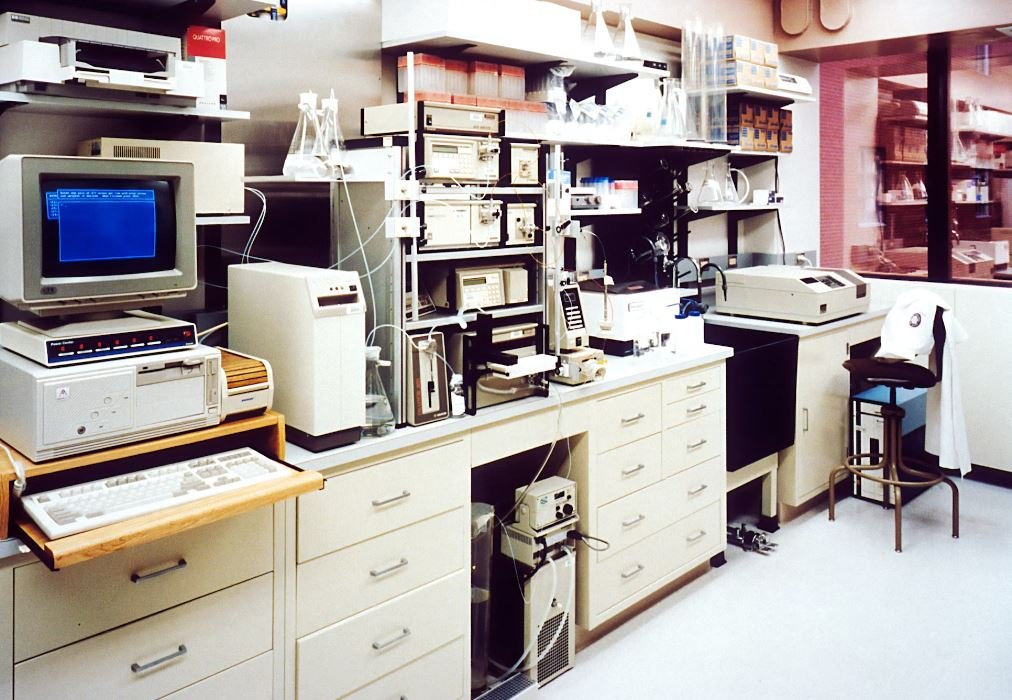What Is Producer in Science?
Producers are an essential component of the food chain in ecosystems. They play a crucial role in converting sunlight, water, and carbon dioxide into organic matter through the process of photosynthesis. This process is the foundation of life on Earth, as it provides energy and nutrients for all other organisms within the ecosystem.
Key Takeaways:
- Producers convert sunlight, water, and carbon dioxide into organic matter through photosynthesis.
- They are the foundation of ecosystems, providing energy and nutrients for other organisms.
- Examples of producers include plants, algae, and some bacteria.
Producers, also known as autotrophs or primary producers, are organisms that can convert energy from the environment into usable chemical energy stored in organic compounds. This conversion process is achieved through photosynthesis, which takes place in specialized cell structures called chloroplasts. These chloroplasts contain the pigment chlorophyll, responsible for absorbing sunlight for the photosynthesis process. Photosynthesis is an intricate and fascinating process that allows producers to capture sunlight and transform it into energy-rich compounds.
Examples of producers include most plants, algae, and some bacteria. Plants, such as trees and grasses, are the most common and recognizable producers. They generate their own food using sunlight and the nutrients they absorb from the soil. Algae, found in aquatic environments, are another group of photosynthetic producers that play a vital role in marine ecosystems. Cyanobacteria, also known as blue-green algae, are some of the oldest producers on Earth and are found in a wide range of habitats.
| Organism | Habitat | Role in Ecosystem |
|---|---|---|
| Oak tree | Terrestrial | Provides food and habitat for other organisms. Releases oxygen. |
| Phytoplankton | Aquatic (oceans) | Forms the base of the marine food chain. Produces oxygen. |
Producers are crucial for sustaining life in ecosystems. They form the basis of the food chain. Herbivores, such as deer and rabbits, rely on producers for their energy and nutrient needs. Carnivores then feed on herbivores, and so on, creating a complex network of interactions within the ecosystem. The web of life depends on producers to supply energy and sustenance to other organisms.
Not only do producers provide food for other organisms, but they also produce oxygen as a byproduct of photosynthesis. Oxygen is released into the atmosphere, allowing animals and other organisms to breathe. Without producers, the oxygen concentration in the atmosphere would decrease, disrupting the balance of life on Earth.
Types of Producers
Producers can be broadly categorized into two types: phototrophs and chemotrophs. Phototrophs, like plants and algae, utilize light as their energy source for photosynthesis. Chemotrophs, on the other hand, obtain energy from chemical reactions. These producers can be found in unique ecosystems such as hydrothermal vents on the ocean floor, where they convert chemicals released from the vents into usable energy through chemosynthesis.
| Type of Producer | Energy Source | Example |
|---|---|---|
| Phototroph | Light | Plants |
| Chemotroph | Chemical reactions | Bacteria at hydrothermal vents |
It’s important to note that producers are not limited to large, visible organisms. At the microscopic level, single-celled organisms, such as certain bacteria and protists, also function as producers. These microproducers are essential in various ecosystems and contribute significantly to global carbon cycling and nutrient cycles. The invisible world of microorganisms holds great importance in sustaining ecosystems.
In conclusion, producers are the foundation of ecosystems, converting sunlight, water, and carbon dioxide into organic matter through the process of photosynthesis. They are vital for providing energy and nutrients to other organisms, maintaining the balance of life on Earth, and ensuring the continuity of the food chain.

Common Misconceptions
What Is Producer in Science?
In the field of science, a producer refers to an organism that has the ability to convert energy from the sun into organic materials through photosynthesis. These organic materials, also known as food, serve as a source of energy for other organisms in the food chain. However, there are several common misconceptions surrounding this topic that can lead to misunderstandings. Let’s explore and debunk some of these misconceptions.
Misconception 1: Producers are only plants
- Producers include both plants and some types of algae.
- Green plants are the most common type of producers, but not the only ones.
- Algae, such as phytoplankton, are also important producers in aquatic ecosystems.
Misconception 2: All producers are autotrophs
- While most producers are autotrophs (organisms capable of producing their own food), not all autotrophs are producers in the scientific sense.
- Some autotrophs, like chemosynthetic bacteria, produce their own food, but they do not convert sunlight into energy.
- Producers, on the other hand, rely on photosynthesis to convert solar energy into carbohydrates.
Misconception 3: Producers are at the top of the food chain
- Producers are actually at the bottom of the food chain, as they form the foundation for the entire ecosystem.
- Consumers, such as herbivores and omnivores, feed on producers to obtain energy and nutrients.
- Carnivores and higher-level predators then consume these consumers, creating a hierarchical structure within the food web.
Misconception 4: Producers are always abundant in ecosystems
- While producers are vital to the functioning of ecosystems, their abundance can vary in different environments.
- Factors like nutrient availability, temperature, and sunlight exposure can affect the growth and distribution of producers.
- In some cases, factors like pollution or disturbances can lead to a decline in producer populations and disrupt the balance of the ecosystem.
Misconception 5: Producers only provide food for animals
- Producers not only provide food for animals but also play a crucial role in maintaining the oxygen and carbon dioxide balance in the atmosphere.
- During photosynthesis, producers release oxygen as a byproduct, essential for the respiration of other organisms.
- They also absorb carbon dioxide, helping regulate the levels of this greenhouse gas in the atmosphere and mitigating climate change.

The Role of Producers in Ecosystems
Producers play a critical role in ecosystems by converting energy from the sun into organic compounds through the process of photosynthesis. These organisms serve as the foundation of food chains and provide nutrients to other organisms within the ecosystem. The following tables highlight different aspects of producers in science, shedding light on their diversity and significance.
1. Representative Examples of Producers
Explore a variety of producers found across different ecosystems, showcasing their distinct traits and characteristics.
| Producers | Ecosystem | Characteristics |
|————–|—————|—————–|
| Phytoplankton| Aquatic | Microscopic |
| Grasses | Terrestrial | Rapid growth |
| Algae | Marine | Photosynthetic |
| Mosses | Forest | Moisture-loving |
| Seaweed | Coastal | High nutrient |
2. Comparison of Photosynthetic Efficiency
Examine the photosynthetic efficiency of various producers, measuring the amount of energy they convert through photosynthesis.
| Producers | Photosynthetic Efficiency (%) |
|————–|——————————-|
| Seagrass | 40 |
| Cereal Crops | 1-2 |
| Algal Biofuels| 3-5 |
| Sugar Cane | 1-3 |
| Forest Trees | 0.5-3 |
3. Producers Role in Oxygen Production
Discover the significant contribution of different producers to the production of oxygen in the atmosphere.
| Producers | Oxygen Production (grams/hour) |
|————–|——————————–|
| Phytoplankton| 100,000 |
| Tropical Rainforest | 20,000 |
| Algae | 15,000 |
| Agricultural Crops | 5,000 |
| Grasslands | 4,000 |
4. Producers Supporting Biodiversity
Explore how various producers facilitate biodiversity by providing habitats and resources for numerous organisms.
| Producers | Organisms Supported |
|————–|————————–|
| Coral Reefs | Fish, Invertebrates |
| Forests | Birds, Mammals, Insects |
| Mangroves | Crabs, Birds, Snakes |
| Grasslands | Herbivores, Insects |
| Kelp Forests | Sea Otters, Fish, Seals |
5. Carbon Sequestration by Producers
Learn about the role of producers in capturing and storing carbon dioxide from the atmosphere.
| Producers | Carbon Sequestration (tons/year) |
|————–|———————————-|
| Seagrass | 10,000 |
| Tropical Rainforest | 7,000 |
| Algae | 3,000 |
| Salt Marshes | 2,000 |
| Peatlands | 1,000 |
6. Producers as a Source of Medicinal Compounds
Discover some examples of producers that have been the source of compounds used in medicine.
| Producers | Medicinal Compounds |
|————–|—————————|
| Willow Trees | Aspirin, Salicin |
| Pacific Yew | Taxol |
| Periwinkle | Vinblastine, Vincristine |
| Foxgloves | Digitoxin, Digoxin |
| Opium Poppy | Morphine, Codeine |
7. Economic Value of Producers
Explore the economic value of different producers as important resources and commodities.
| Producers | Economic Value |
|————–|————————–|
| Wheat | $55 billion |
| Coffee | $200 billion |
| Cocoa | $9 billion |
| Rubber | $52 billion |
| Soybeans | $61 billion |
8. Producers and Food Security
Discover how different producers contribute to global food security by providing essential crops.
| Producers | Contribution to Food Security |
|————–|——————————-|
| Rice | 20% |
| Maize | 14% |
| Wheat | 13% |
| Soybeans | 6% |
| Potatoes | 4% |
9. Producers and Climate Regulation
Explore the impact of producers on regulating the Earth’s climate through carbon sequestration and regulating temperature.
| Producers | Climate Regulation |
|————–|———————————|
| Forests | Temperature regulation, cooling |
| Phytoplankton| Carbon dioxide absorption |
| Tundra | Permafrost conservation |
| Wetlands | Methane reduction, flooding control |
| Seagrass | Ocean acidification reduction |
10. Threats to Producers
Investigate the various threats that producers face, including deforestation, climate change, pollution, and excessive harvesting.
| Producers | Primary Threats |
|————–|———————————–|
| Amazon Rainforest | Deforestation, Fire, Mining |
| Coral Reefs | Ocean acidification, Overfishing |
| Mangroves | Coastal development, Pollution |
| Grasslands | Conversion to agriculture, Overgrazing |
| Phytoplankton| Ocean warming, Ocean acidification |
Producers are vital components of ecosystems, contributing to various ecological processes and providing numerous benefits. Through their ability to harness energy from the sun, they participate in essential processes such as oxygen production, carbon sequestration, and the support of biodiversity. Furthermore, they offer economic value and contribute to food security. However, these vital organisms face numerous threats that require urgent attention to ensure their sustainability and the well-being of our planet.
Frequently Asked Questions
What is a producer in science?
A producer in science refers to an organism capable of generating its own food through the process of photosynthesis. Producers, also known as autotrophs, convert energy from sunlight into organic compounds, such as glucose, which become the basis for the entire food chain.
How do producers obtain energy?
Producers obtain energy by harnessing sunlight through a process called photosynthesis. They utilize specialized structures called chloroplasts, which contain chlorophyll, to capture sunlight and convert it into chemical energy, in the form of glucose, that can be utilized for growth and other metabolic processes.
What are some examples of producers?
Examples of producers include plants, algae, and some types of bacteria. Plants, in particular, are the most common and well-known producers in various ecosystems, as they efficiently convert sunlight into energy.
How do producers contribute to ecosystems?
Producers play a vital role in ecosystems by serving as the primary source of food for other organisms. They form the foundation of the food chain, providing energy and nutrients to consumers, such as herbivores or omnivores. This energy transfer continues up the food chain and sustains the entire ecosystem.
What is the significance of producers in science?
Producers have immense significance in science as they form the basis of all ecosystems and maintain the flow of energy through food chains and food webs. They play a crucial role in the global carbon cycle by absorbing carbon dioxide from the atmosphere and releasing oxygen through photosynthesis.
Do producers only exist in terrestrial environments?
No, producers exist in both terrestrial and aquatic environments. In terrestrial environments, plants predominantly act as the primary producers, while in aquatic environments, various types of algae and phytoplankton fulfill this role.
Can producers have an impact on climate change?
Yes, producers have a significant impact on climate change. Through the process of photosynthesis, they absorb carbon dioxide, which is a greenhouse gas responsible for global warming, and release oxygen. By effectively reducing the amount of carbon dioxide in the atmosphere, producers help mitigate climate change.
What happens if there are no producers in an ecosystem?
If an ecosystem lacks producers, the entire food chain and ecosystem structure would collapse. Producers are essential for converting sunlight into energy and providing nutrients to other organisms. Without producers, there would be no source of food, leading to an imbalance and ultimately the decline of the ecosystem.
Can producers be consumed by other organisms?
Yes, producers can be consumed by other organisms. Herbivores, such as deer, rabbits, or insects, primarily rely on producers as their source of food. Producers are the primary producers of organic matter, forming the basis for the subsequent trophic levels in a food chain.
What is the role of producers in the oxygen cycle?
Producers play a crucial role in the oxygen cycle through the process of photosynthesis. During photosynthesis, they release oxygen into the atmosphere as a byproduct. This oxygen is then consumed by other organisms during respiration, providing them with the necessary molecular oxygen for survival.




